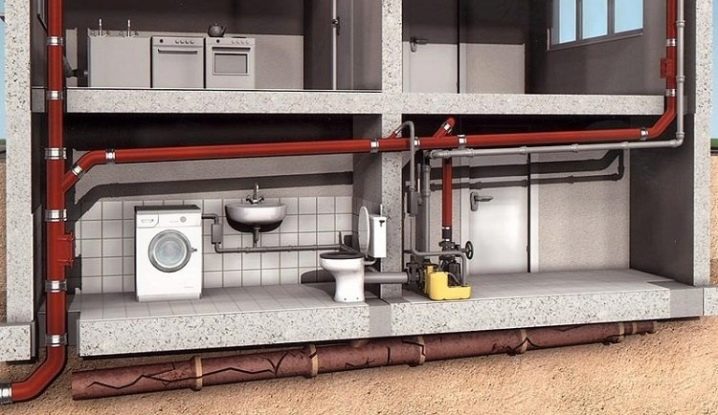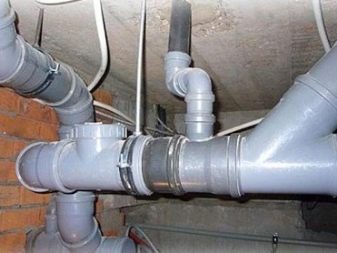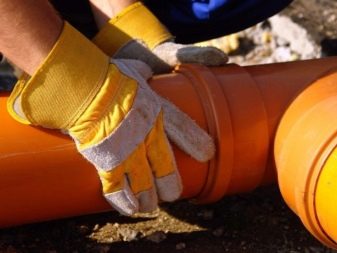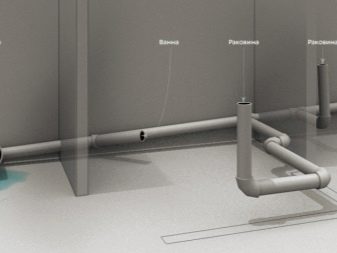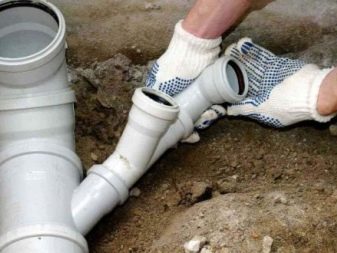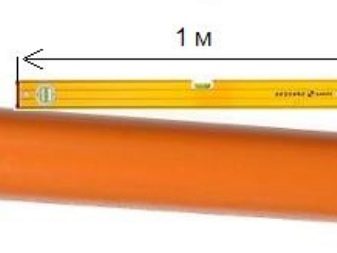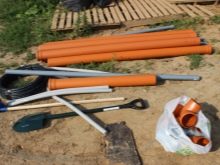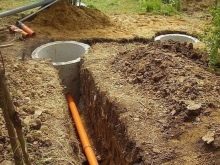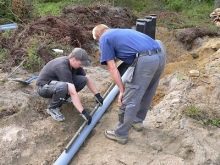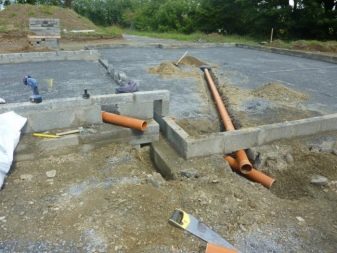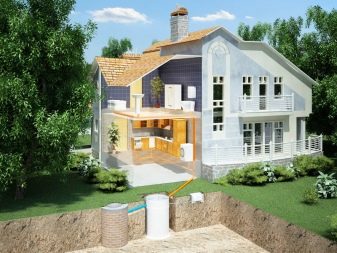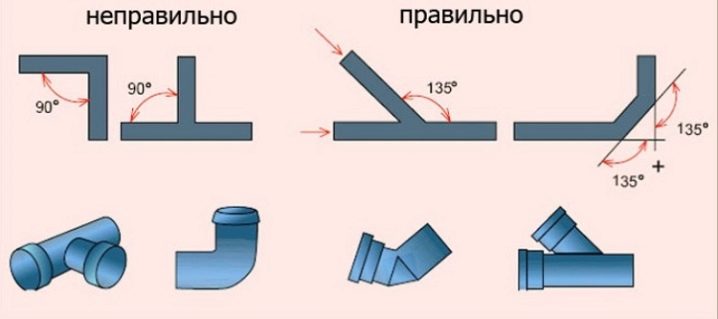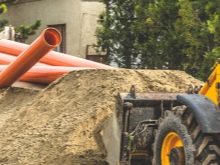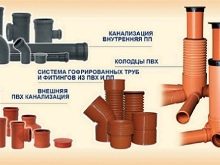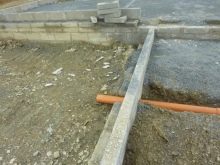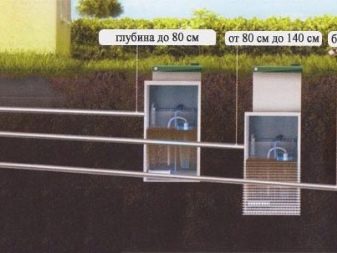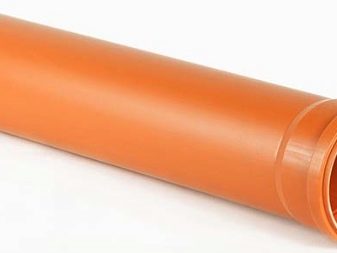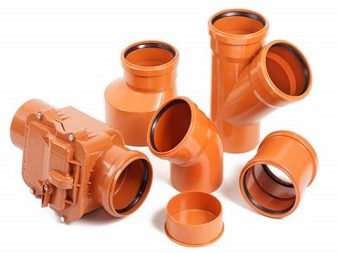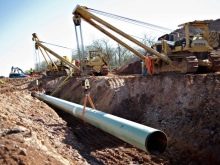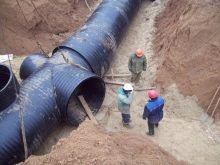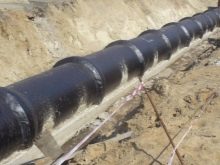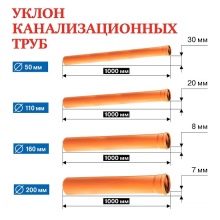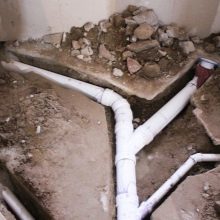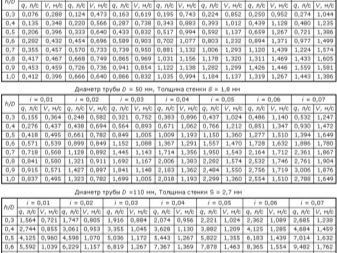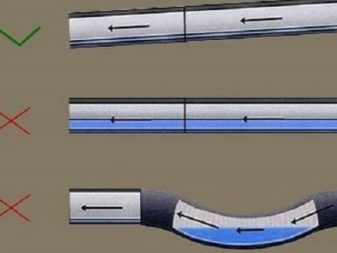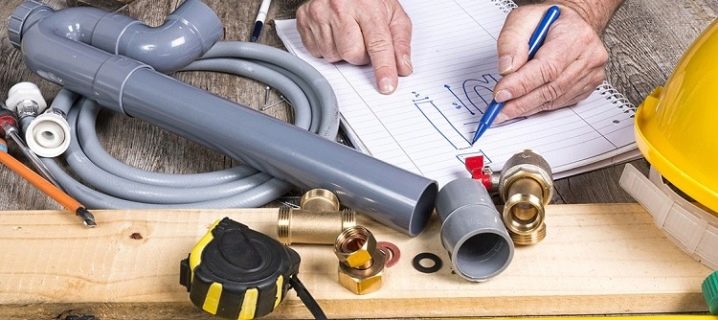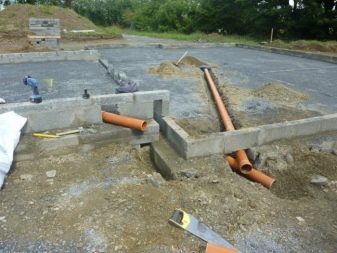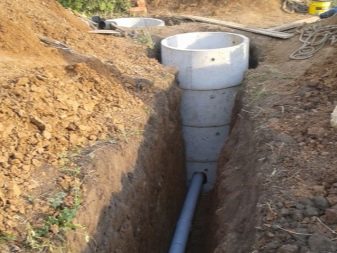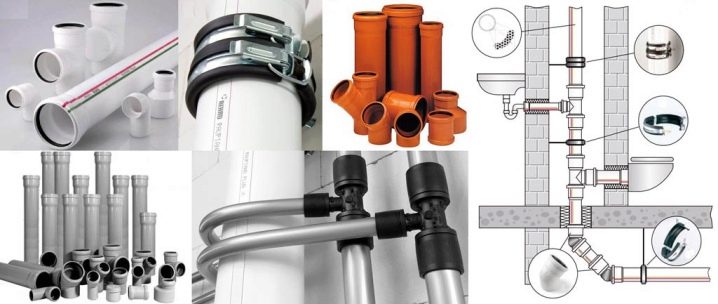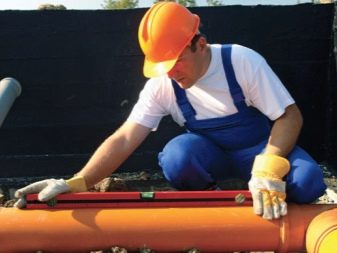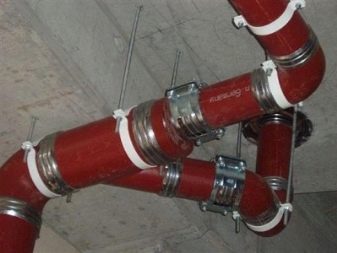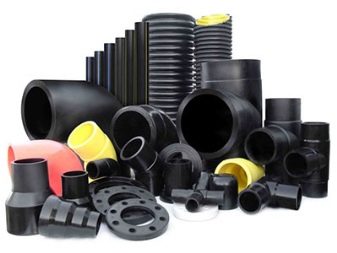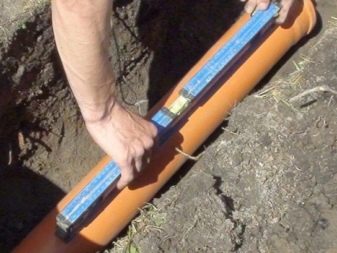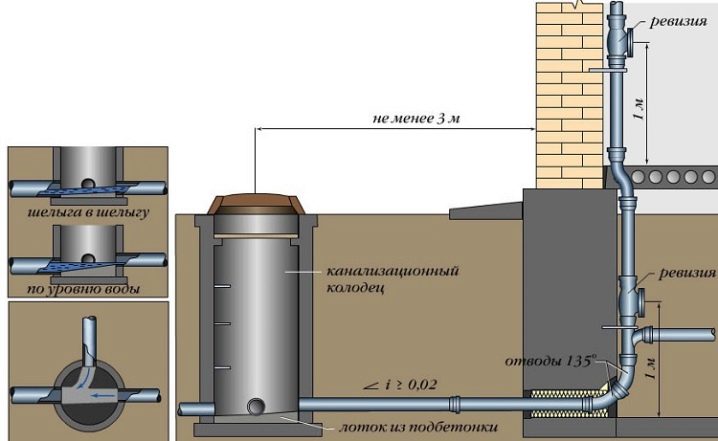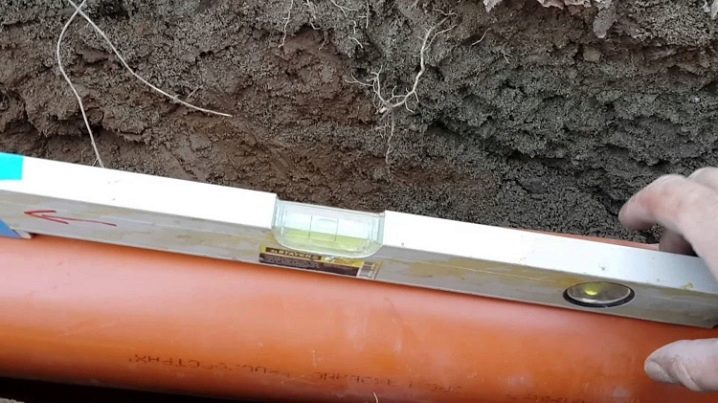Rules for calculating the slope of the sewer pipe
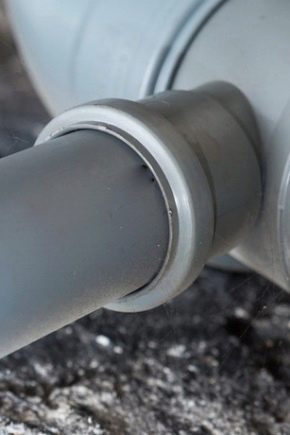
The slope of the sewer disposal is important to correctly calculate for the normal functioning of the system. The rules especially need to take into account the novice master, who solves the problem of building sewage systems in private at home. If the installation of the system of drains is not observed, frequent stagnations are possible, which will require constant cleaning. This will complicate the process of operating the system.
Special features
The rules and regulations of design and construction are contained in the SNiP. Recommended actions associated with sewerage construction works should be observed. Particular attention should be paid to the organization of bias in a private house.The internal and external drainage systems will differ in the versions of the pipes used and the design slope.
Immediately it is worth making a reservation that the maximum possible slope of the sewer pipe is not the best solution. When the slope is too high, the outflow of fluid will be fast, but because of this, the smells of feces will be felt in the inside of the apartment. If the bias is too high, there are cases of breakthrough siphons.
Variants of the pipes used for the installation of sewage inside the house - 50 mm, and outside - 110 mm. In places where devices are connected, the planned trunk should be smaller in diameter. Devices are sanitary appliances that can be installed in an apartment: sink, bathtub, toilet. Of all devices, the outflow must be timely, and this will provide a properly designed slope.
The best arrangement, used by professionals, is one in which the drains flow themselves. The method is suitable for arrangement of systems in high-rise buildings, and in private homes. At the same time, horizontal pipes with the calculated slope angle should be correctly installed after the fixed risers. Considering that the vertical branches of the sewage system are characterized by increased dimensions in comparison with the other pipes, horizontal branches attach fittings to them.Towards devices, horizontal pipes should be laid along the shortest path.
If this condition is met, the likelihood of clogging will be minimal. Another feature of sewer systems is that the smaller the pipe diameter is chosen for the system, the greater the inclination will have to be created. The difference in height is taken into account at the highest point — this is the beginning of the system, and at the lowest point is the end of the entire system being mounted.
The slope is calculated per linear meter, this value must be observed for the entire length of the system. If you do not stick to it, you will need to rework the entire drainage system.
When calculating per meter, the pipe diameter is taken into account.
- for drainage with a diameter of 40-50 mm, the slope is 3 cm per meter;
- for drainage with a diameter of 85-110 mm, the slope is 2 cm per meter.
Norms
Inside the apartment there is practically no way to measure the flow of liquid in the sewer system with our own capabilities. Professionals are advised to take into account the permissible figures indicated in the normative tables. According to the recommendations of SNiP, the flow velocity should be 0.7-1 m / s.
For this speed, the standard angle of inclination should be for products with a diameter of:
- 5 cm - 30 mm per linear meter;
- 11 cm - 20 mm per linear meter;
- 16 cm - 8 mm per linear meter;
- 20 cm - 7 mm per linear meter.
Regulatory documents in which these rules are indicated are:
- Clause 18 of SNiP 2.04.01 / 85. Here the device of internal drainage and sewage of buildings is described in detail. For example, from here you can learn that the branches of drainage with a cross section of 4-5 cm should be laid with a slope of 0.03, and a cross section of 8.5-10 cm - 0.02.
- Paragraph 2.41 of SNiP 2.04.03 / 85 on external sewage effluent describes the rules regarding the minimum slope of pipes of 15 cm. It should be equal to 0.008 cm, and for pipes of 20 cm - 0.007 cm.
- If the need arises to make the network slope smaller, you can be guided by clause 18.2 of SNiP 2.04.01-85. This item takes into account the peculiarities of fluid flow through pipes with different physical characteristics. For example, for plastic pipes, the speed coefficient should be equal to 0.5, and for networks of other materials a coefficient of 0.6 is needed.
Theoretically, if we calculate the volume of waste liquid, the pipe filling, the flow rate, we can get a different result, which will still correspond to the standard speed of the liquid,equal to 0.7 m / s.
A separate explanation in SNiP 2.04.03 / 85 concerns external sewage systems with a pipe size of 15-20 cm. In particular, the rules allow the use of standard indicators for slopes: 0.005 for 20 cm of products, 0.007 for 15 cm of products.
Paragraph 18 of SNiP 2.04.01 / 85 regulates the greatest slope of networks, which should not be greater than 0.15. At the same time, branches from sanitary devices, which are up to 150 cm long, are excluded from the calculations. Thus, on each meter of sewage it allows no more than 15 cm of slope. If the indicator is exceeded, the line will be silted.
In the calculations can help special tables.
Plumbing device | Diameter, cm | Slope per meter, cm | The gap between the central drain and siphon, m |
bathroom | 0,4 | 3 | 1-1.3 |
bathroom, shower, washing | 0,5 | 4.8 | 1.7-2.3 |
shower | 0,4 | 4.8 | 1.5-1.7 |
toilet | 10 | 2 | Until 6 |
bidet | 0,3, 0,4 | 2 | 0.7-1 |
washing | 0,3, 0,4 | 3.6 | 1.3-1.5 |
sink | 0,4 | 1.2 | 0-0.8 |
main riser | 10 | ||
branches from the riser | 6,5-7,5 |
You can determine the standard bias yourself. The main difficulty lies in the unusual units of measurement of the slope, which are indicated in the regulatory documentation. In the main guidelines, slopes are measured in decimal fractions of the form 0.03 or 0.008.
In a mathematical system, angles are measured in degrees, so the numbers in the tables often become incomprehensible.And the numbers mean a fractional ratio of the height of the slope to the length of the drainage system. Track the value will be easier if you translate the figures in centimeters. For example, 3 cm by 1 meter, 0.8 cm by 1 meter. If you know the length of the entire sewer, you can multiply it by the amount of slope, which will give the total height for the entire designed sewer.
What does it depend on?
Based on the table below, the slope is associated not only with the diameter of the products and the sewage meter, but also with special conditions.
pipe diameter, cm | meter bias | bias under special condition |
15 | 0,008 | 0,007 |
20 | 0,007 | 0,005 |
Under special conditions in which the slope can be mounted are understood such factors as:
- material products;
- the location of the drainage;
- pipe pass property.
The quality of the pipe to pass through a liquid is closely related to the material of its manufacture and size. The designation of this property is not found on the label, so it will have to rely on their own.
The complexity of the calculations lies in the fact that for each individual case you need to apply your own appropriate method. An important parameter used in the calculations is the outer size of the pipe. In the formulas, it can be denoted by the Latin or Russian abbreviation "Dn" or "Dn".
There is a table with approximate information that will facilitate the task of determining the throughput of systems. High-precision calculations in most cases, the arrangement of home sewage is often not required. Values for the pipeline, equal to 1.5-3.0 m / s, can be used without fear of violation of regulations. The table also includes information on other types of gas and water pipelines.
The capacity of the sewage system is closely related to the type of pipeline being installed. The line can be pressure or non-pressure. Standard design formulas include the laws of hydraulics.
In hydraulic formulas, the following unknowns are counted:
- line diameter;
- average flow rate;
- hydraulic slope;
- filling level.
In fact, it is often enough to know the hydraulic slope I or h / d. The first indicator is correctly considered identical to the slope of the base.
The speed values for household drainage can be examined from the table below:
Doo, see | h / doo | self-cleaning speed, m / s |
15-25 | 0,6 | 0,7 |
30-40 | 0,7 | 0,8 |
45-50 | 0,75 | 0,9 |
60-80 | 0,75 | 0,1 |
90 | 0,8 | 1,15 |
The smallest incline for sewers of small size i = 0.008, 0.007. The required throughput of various products from 5 to 200 cm is in special professional tables.The indicators are directly related to the maximum load of the network, as well as the average speed of the movement of runoff. The value demonstrating the maximum pipe load is measured by the H / d index.
With the help of tables it is easy to choose the right pipe diameter, but it is important not to forget to decide on the flow rate. After all, a greater number of drain devices means greater fullness of the line. Flow rates are available for each device, from the tap to the dishwasher.
For example, in the table h / D - pipe load;
- V is the flow rate;
- Q - consumption.
The choice of the right type of system is based on technical feasibility and sanitary conditions. The accepted system must meet all requirements and technologies.
How to calculate?
So, if the pipes for a particular sewage system are selected, their diameter is known, the required flow rates are taken into account and related to the degree of filling, so you can proceed to the calculation with an example of pipes by diameter using the table.
The task of the calculation is the selection of the correct slope of the drainage system. To simplify the task, a metric scheme can be taken as a basis, which will be related to a specific building.The diameters of the branch branches are assigned without calculation, for sinks from the toilet bowl - 10 cm, from other devices - 5 cm.
The highest throughput of the riser 100 mm - 3.2 l / s, for pipes with a diameter of 50 mm - 0.8 l / s. Q (consumption) is determined by the relevant table and for our example, this value is 15.6 l-h. If the estimated flow rate is larger, it is sufficient to increase the size of the discharge pipe, for example, up to 110 mm, or select a different connection angle with the riser of a particular internal branch to the sanitary device.
The calculation of horizontal taps in the yard part includes the selection of sizes and geodesic inclination angles at which the speed will be not less than self-cleaning. For example: with 10 cm products, the value of 0.7 m / s applies. In this case, the figure for H / d should be not less than 0.3. The value is taken into account per 1 meter of the external drain pipe. In the calculation formulas, the coefficient K – 0.5 is also taken into account, if the pipeline is of their polymeric materials, K – 0.6 for drainage systems from other bases. To achieve free flow, it is important to take into account the characteristics of the pipe material.
According to the results of the calculations, the number should be determined, which determines the maximum and minimum angle of the main line in the control well.At the beginning of the system, the indicator should not be less than the indicator in the reservoir.
When laying drainage on the street, it is important to consider the depth of frost penetration. Depending on the region, this value can be from 0.3 to 0.7 meters deep. If the highway is laid in a place with increased traffic flow, it is important for the system to provide a place for mounting the protection from destruction by the wheels of the machines. If such a device is provided, its location is also calculated by the formulas.
If we take as an example the calculation of the slope of a common version of a 110 mm pipe used for an external sewer system, then according to the standards, it is 0.02 m per 1 meter of main. The total angle indicated by the SNiP for a pipe of 10 m will be as follows: 10 * 0.02 = 0.2 m or 20 cm. This is the difference between the beginning and the end of the entire system.
You can also calculate the level of filling of the pipe yourself.
For this useful formula:
- K ≤ V√ y;
- K - the optimal value (0.5-0.6);
- V - speed (minimum 0.7 m / s);
- √ у - square root of pipe filling;
- 0.5 ≤ 0.7 √ 0.55 = 0.5 ≤ 0.52 - the calculation is correct.
In the example, the test formula showed that the speed was chosen correctly. If you increase the minimum possible value, the equation is violated.
Tips
Experts advise not to confuse ways to install sewer systems of an apartment or house. The first option involves the use of a vertical system. In this case, the plumbing device is mounted pipe in an upright position. From it already begins the highway, which requires the calculation of a certain slope.
The method is used when sanitary devices are located on the second floor or in the attic. External sewage originates immediately from the plumbing devices located on the first floor in a private house.
If during the installation of the sewer system mistakes were made and there was no inclination, it is possible to correct the situation without disassembling the pipes. For example, if you think of a podium for a bathroom or a toilet. The angle of inclination for each room is calculated separately, be it a kitchen room, a sanitary room, or some of its parts that require the connection of a combined sewer system. Otherwise, the calculated angles of the external sewage. At the same time, the largest possible slope should not exceed 15 cm per meter of running pipe.
The arrangement of the system is important to begin with the drafting of the project. In the course of its creation, it will be easier to determine the correct parameters. The quality of drainage systems will depend on the correctness of the selected norms and calculations. Calculations are important to have before the start of installation work. In the process of how the sewage fits, the design figures will be easier to verify their correctness.
Any sewage system should provide fluids with unobstructed flow and ensure good self-cleaning. Be sure to understand that in the textbooks indicated averaged values. Practicality and common sense in working on the sewer system certainly will not hurt.
The basic rules that should be followed when setting up the system are as follows:
- fewer connections and corners - fewer leaks during operation;
- if you direct the sockets along the flow of the liquid, it will help to avoid leaks;
- no need to cut fittings;
- undesirable joining of pipes with cracks or damage, as well as the use of defective components;
- Carefully consider possible defects on the sealing rubber bands.
Do not forget that the standard slope indicators are calculated per linear meter of pipe. Therefore, during installation, check the entire length for the presence of identical values. If the sewer fits in a private household, there is no need to apply complex formulas.
It is enough to take into account the values indicated in the tables. Calculations by the formulas are made for large enterprises by special institutions.
In the following video, SK Plast specialists explain the principles of laying sewers in an accessible and understandable manner: installation rules, installation conditions, types of connections, and allowable pipe slopes.
